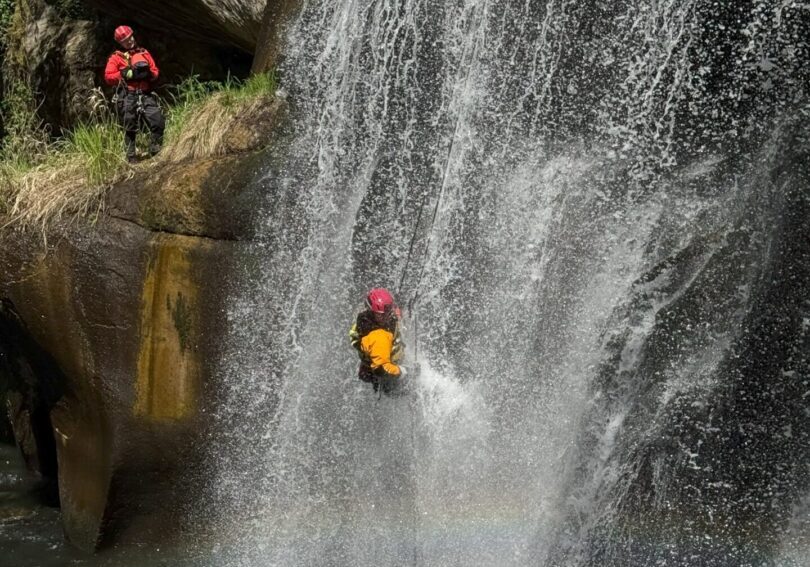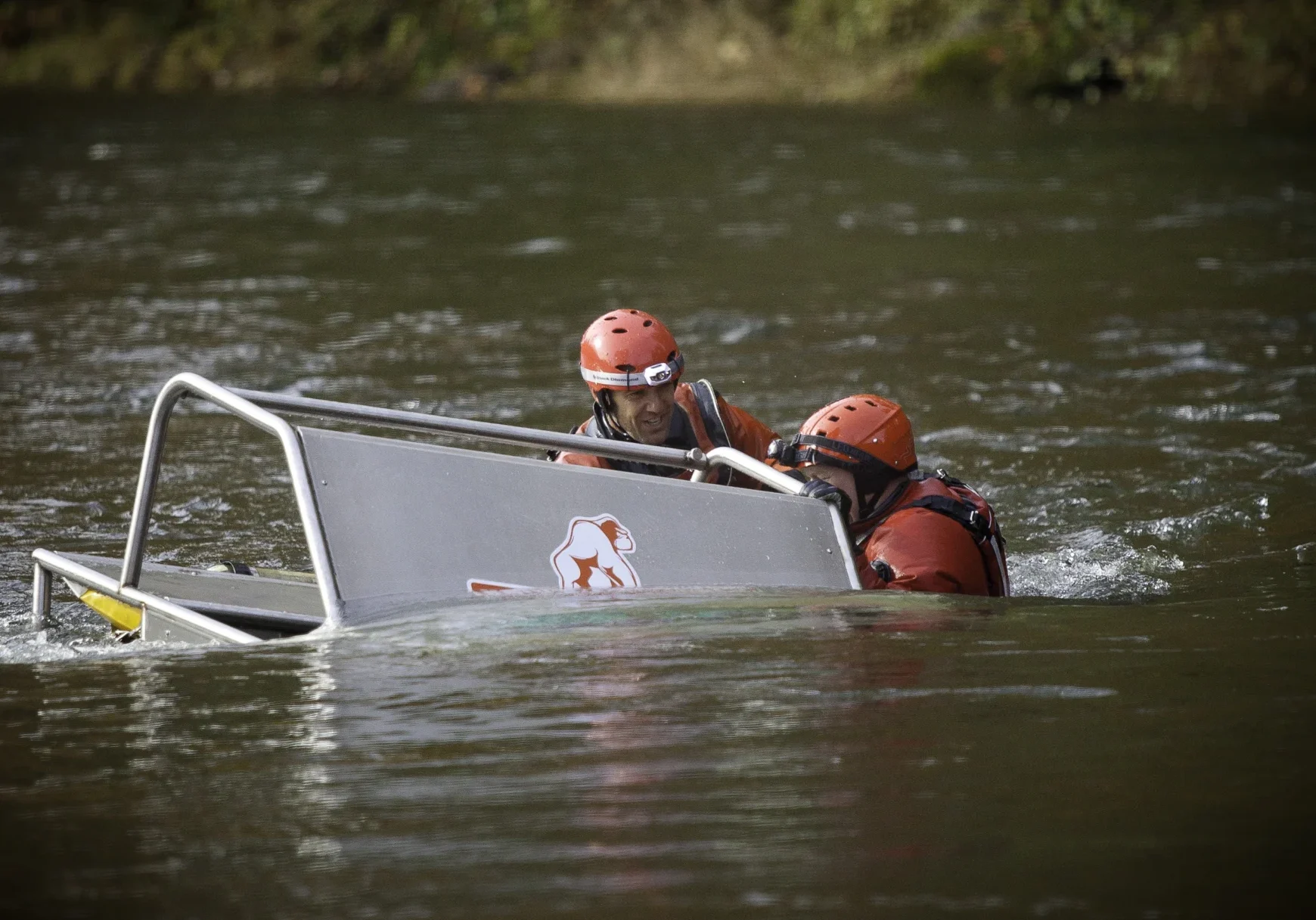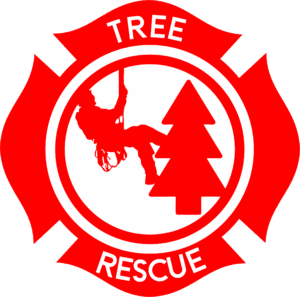
Technical Rescue and Truck Company Ops

OPEN Enrollment Classes
Advanced Swiftwater
RIT for ROPE
Swiftwater 1
Industry-Leading Fire Service and Technical Rescue Training
KD Rescue is a leader in fire service training, curriculum development, and logistical support for organizations and companies across the U.S. With a team of seasoned, certified instructors and industry partners nationwide, KD Rescue specializes in providing cutting-edge technical rescue training for commercial businesses, industrial sectors, and public safety agencies.
Our Advanced Expertise
Our expertise covers Truck Company Operations, NFPA-compliant Rope Technician training, Confined Space Rescue, Rescue Swimmer certification, and Swiftwater Technician training at both basic and advanced levels. Through our in-house fabrication department, we also offer custom-designed training props and equipment tailored to meet your specific training requirements. These unique solutions enhance realism and effectiveness for rescue and safety training.
Specialized Programs in Technical Rescue
KD Rescue's instructors are 3rd-party certified and accredited through Rescue 3 International and are in good standing with the International Society of Fire Service Instructors. We take pride in delivering our highly sought-after programs, including Aerial Dynamics/Physics and Advanced Swiftwater Technician training, to commercial sectors in various industries. Our mobile capabilities mean we can bring tower rescue and vehicle-in-water training to your location, ensuring convenience and direct access to expert instruction.
Consulting for Technical Rescue Program Design
For companies looking to strengthen their technical rescue programs, we offer consulting services for program design, Job Performance Requirements (JPR) development, tracking, and lesson plan creation. KD Rescue helps you implement and track your organization's rescue and safety training needs with custom curriculum development that meets industry standards.
Tailored Rescue Training Solutions
Whether you're hosting a technical rescue class or need expert guidance on designing a customized training program, KD Rescue is your go-to partner. Contact us today to discuss how we can elevate your rescue training and safety protocols.

Class Offerings


NFPA 1006 Chapter 7 (Confined Space Rescue) Operations and Technician Level Skills.
Confined Space Rescue Technician is an intensive 40-hour Confined Space Entry and Rescue class that provides hands-on training and real life scenarios allowing the student to gain confidence in this dangerous environment.
Skills Taught
- Rescuer safety
- Team evaluation
- Pre-planning
- Supplied air breathing systems
- Atmospheric monitoring
- Communications systems
- Personal protective equipment
- Patient packaging and recovery
- Tripods and other artificial high anchor points
- Lock-out, tag-out
- Rope systems for confined space entry and rescue, and more.


This swiftwater rescue advanced class is the second class needed for personnel wanting to train to the standards and requirements of the National Fire Protection Association (NFPA) 1670 Standard and the NFPA 1006 Standard at the Technician Level for water. This course takes the student who has completed Swiftwater and Flood Rescue Tech 1 (SRT) beyond the emphasis of self-rescue and further concentrates on rescue in hard to get to areas and more difficult swiftwater situations. This is done by integrating the SRT techniques into more difficult technical swiftwater rescue situations including complicated scenarios, intensive search, boating skills, night ops, high lines and technical rope rescue integration.
The Swiftwater and Flood Rescue Tech Advanced curriculum is specifically designed for fire fighters, rescue teams and professional rescuers who need the best swiftwater training available! The course also includes a night search and rescue operation in a river environment, It is a very active and fun course for students who are up for the challenge, and looking to gain Technician level knowledge and skills.
Students are introduced to the role and utilization of various skills in river and flood rescue, including:
- advanced swimming and go rescues
- rope systems
- management of litter & patient raising systems
- highline systems
- advanced river search concepts
- performing rescues at night or in low visibility




Our forcible entry curriculum is custom built to fit your needs choose from one or more of the many skill sets offered to build a 1 to 5 day course for your department.
Forcible Entry I
Format: 8hr HOT
Full day of Hands on Forcible entry including:
- 1 & 2 Firefighter Residential Conventional
- 1 & 2 Firefighter Commercial Conventional
- Drop Bars with Saws
- Window Bars
- Padlocks
- Through the Lock
- Overhead Doors
Forcible Entry II
Format: 8hr HOT
Full day of Hands on “Advanced Irons” including:
- Limited space Conventional
- Limited Visability Conventional
- Irons Only Drop Bars
- Irons Only Secondary Devices
- Recessed Doors
- Fortified Doors


Students will demonstrate the skills and techniques used to deploy and operate aerial apparatus at various emergency incidents. This program utilizes NFPA 1002, Standard for Fire Apparatus Driver/Operator Professional Qualifications. Demonstrations include stabilization, positioning and tactics used on scene. Also presented are the inspection and maintenance requirements for an aerial apparatus as well as safe driving techniques. The ability to safely operate fire apparatus is crucial to your success as a driver/operator and is critical to your department’s overall public image. The curriculum consists of mathematical theory and application, physics, and best practices implementation as it relates to aerial apparatus.


Looking for tips on skills needed to be an effective Truckie on the fireground? Learn from instructors who are ready to share their knowledge assembled through years of serving in some of the busiest truck companies in the country. Our Instructors stand ready to present all the tactics and skills needed to perform laddering, forcible entry, searches, vent and more. Don’t miss this exceptional opportunity!
- Portable Ladders
- Basic Forcible Entry
- Advanced Forcible Entry
- Through the Lock Forcible Entry
- Basic Search & Rescue
- Vent/Enter/Search (VES)
- Peaked Roof Operations
- Flat Roof Operations
- Tower Ladder Operations
- Aerial Ladder Operations
- Working from the Bucket
- Working from the Aerial Ladder
- Ventilation – Traditional vs. PP


This course is designed to provide critical skills required to successfully execute a rescue of a victim in a tree. This program is designed to provide critical skills required to successfully execute a rescue of a victim in a tree. Participants will become prepared for emergency response to high-angle arborist rescue incidents including but not limited to...
• Fundamentals of tree risk assessment (So the rescuer can act decisively in the knowledge of this seemingly foreign environment)
• Understanding of standard tree industry rigging and access methods (To better understand the rigging you’ll encounter, and best be able to leverage it to your advantage)
• Knot and anchor systems used in tree access as well as critical knowledge in mechanical advantage systems and force vector analyses
• Tree-based (Rescue climber(s) needed only)
• Ground-based (No rescue climber needed, ground operations required)
• Combination (Tree and ground-based)
• Tree access methods and movement within the canopy • Throw lines
• Double and single rope techniques
• Spikes + flip lines
• Limb walking, and horizontal movement within the canopy
• Using existing pre-existing equipment for rescue
• Anchors, friction devices, high points, ropes
• Entrapment, stabilization, cutting, or lifting scenario
• Victim without harness


RS is a 3 day class designed to train and qualify students to the level of Rescue Swimmer. Students will perform the duties of a Rescue Swimmer through hands-on training and skill development in an open water environment. Students will also gain the knowledge and skills needed to identify hazards, self-rescue, and effectively manage rescues during water rescue incidents.
This training establishes core objectives for all basic skills required for rescue swimmers working on inland waters. These skills represent operations on water incidents, search patterns, rescuer safety and victim stabilization. This training will fulfill Rescue Swimmer objectives that include Car Prop Entrapments, Diving to Depth Techniques, Search Patterns, Victim Contact Rescues and Rescue Swimmer Deployment. Students will need to provide documentation of a successful IADRS test completion prior to class. This test may be scheduled prior to class through KD Rescue


The Rescue from Vehicles in Water (RVW) is a specialist course for Swiftwater and Flood Rescue Technicians that explores the skills required to deal with rescues from vehicles in water. The course looks at vehicle behavior and stabilization in water as well as access techniques and casualty extrication.
CONTENTS
Theoretical
- KD Rescue philosophy
- Standards that the training meets
- Vehicle behaviour in water
- Pre-Planning
- Incident size-up
- Glass Management
- Incident Management
- Personal Equipment
- Medical and decontamination considerations
- Considerations for night/poor light visibility operations
- Communication
Practical part
- Anchors
- Vehicle Stabilisation
- Casualty Extrication
- Shallow water techniques
- True rescue - tethered
- Pendulum extrication
- Tensioned diagonal
- Tethered boat techniques
- Single bank extended platform
REQUIREMENTS
- Swift and Flood Rescue Technician (SRT)
- Declaration of medical fitness
- Minimum 18 years
- Be a trusted swimmer


Our Tower Rescue Training certifications are thoughtfully crafted to support both you and your employees in meeting Tower Safety and Rescue certification requirements.
Tower Safety ensures compliance with or surpasses relevant sections of ANSI (American National Standards Institute) standards such as Z359, Z490, ANSI 10.48, as well as OSHA (Occupational Safety & Health Administration) guidelines, TIA 222-H, and TIA 322.
We prioritize the safety of every instructor and student in Tower Safety Training, emphasizing that safe work performance and training are paramount in the daily routine of a cell tower worker.
Our training program is widely accepted within the industry, and recognized by carriers and their turf vendors.
At KD Rescue, our primary goal is to ensure that you leave our Tower Rescue school with new skills and confidence and enthusiasm about your career. Your safety and competence are our top priorities, and we strive to provide a training experience that empowers you for success in the field


The REMS team (Rapid Extraction Module Support) is a pre-staged rescue team assigned to a wildland fire to provide firefighters a safe, effective, and efficient method of egress off the fireline in the event of injury or illness incurred during firefighting operations. The wildfire environment adds several high-risk variables not present in typical fire service rescue responses. Along with common EMS response and care on wildland fires, REMS teams must be capable of performing rope-based rescue in remotely accessible terrain with limited resources.
KD Rescue REMS classes are tailored to supplement your agency’s current rope rescue practices and equipment. Eligible students should be certified as Technician-level rope rescuers through their AHJ.
REMS class will advance knowledge and skills in:
- REMS introduction (expectations, unit typing, and training requirements)
- Patient packaging and movement in low, moderate, and high-angle wildfire environments
- Terrain scouting and rescue pre-planning
- Small party rescue techniques
- Vehicle rescue cache (NFPA G-rated rope/rigging)
- Non-vehicle rescue cache (hike-in lightweight rope/rigging)
- Lightweight rope system construction, force and risk analysis
- Working with hand crews during IWI (Incident Within an Incident)
- UTV operations and patient extraction
- Vehicle rescue (over-the-embankment) access, stabilization, and extrication
- Coordination with air and ground transport units




Elevator Incidents and Emergencies occur everyday across the country. Our class is a 2 part portion that can be conducted in 1 or 2 days (approx 4 hrs). The Classroom portion is designed to provide the students with an in depth look at the construction and operation of elevators. Both traction and hydraulic systems are discussed. The necessary steps to mitigate an elevator incident or emergency are also presented to the students. Size-up, Lock-Out /Tag-out, Elevator Key Use, Poling and Removal Procedures are covered in this in-depth powerpoint.
The Hands-On portion of the program puts all of the classroom techniques to work. The host Department provides an elevator and all of the techniques used to mitigate an incident and emergency are performed. If so equipped, Fireman Service Use will also be addressed. Class size depends upon the ability of the host Department in securing elevators to handle the student ratio.













The SRT course provides rescuers with the fundamentals of survival in moving water and is recommended for anyone who may be called upon to effect in-water rescues. Students gain knowledge in hydrology and river classifications, size-up, site control and scene management. Practical skills include self-rescue, swiftwater swimming and the fundamentals of shore, boat and in-water rescues. Additionally students are introduced to the basics of boat handling and the fundamentals of rope rescue including mechanical advantage and anchor systems.